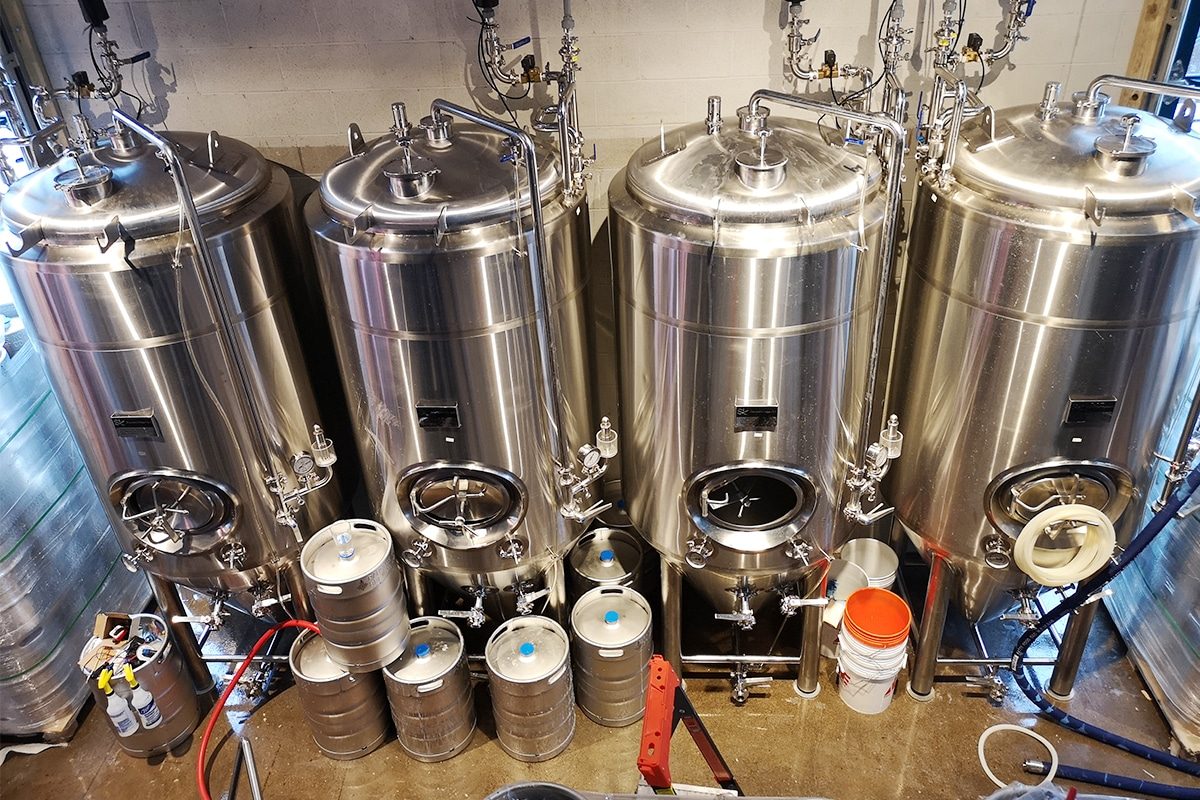
What Is The Difference Between Open And Closed Fermentation Tanks?
Fermentation is a crucial stage in the brewing process, where yeast converts sugars into alcohol and carbon dioxide, defining the beer’s flavor, aroma, and texture. The choice of fermentation tank plays a significant role in these outcomes, with open and closed fermentation tanks offering distinct advantages and challenges. Open fermentation tanks, often used in traditional brewing methods, expose the wort to the environment, allowing for unique flavor development through interaction with wild yeasts and bacteria. In contrast, closed fermentation tanks provide a controlled environment, minimizing contamination risks and ensuring consistent results. Knowing the difference between these two types of fermenters is essential for brewers aiming to brew a specific beer style and maintain quality during the brewing process. This article explores these differences in detail, helping brewers make informed decisions that align with their production goals and the unique characteristics they wish to impart to their beers.
Complete Guide
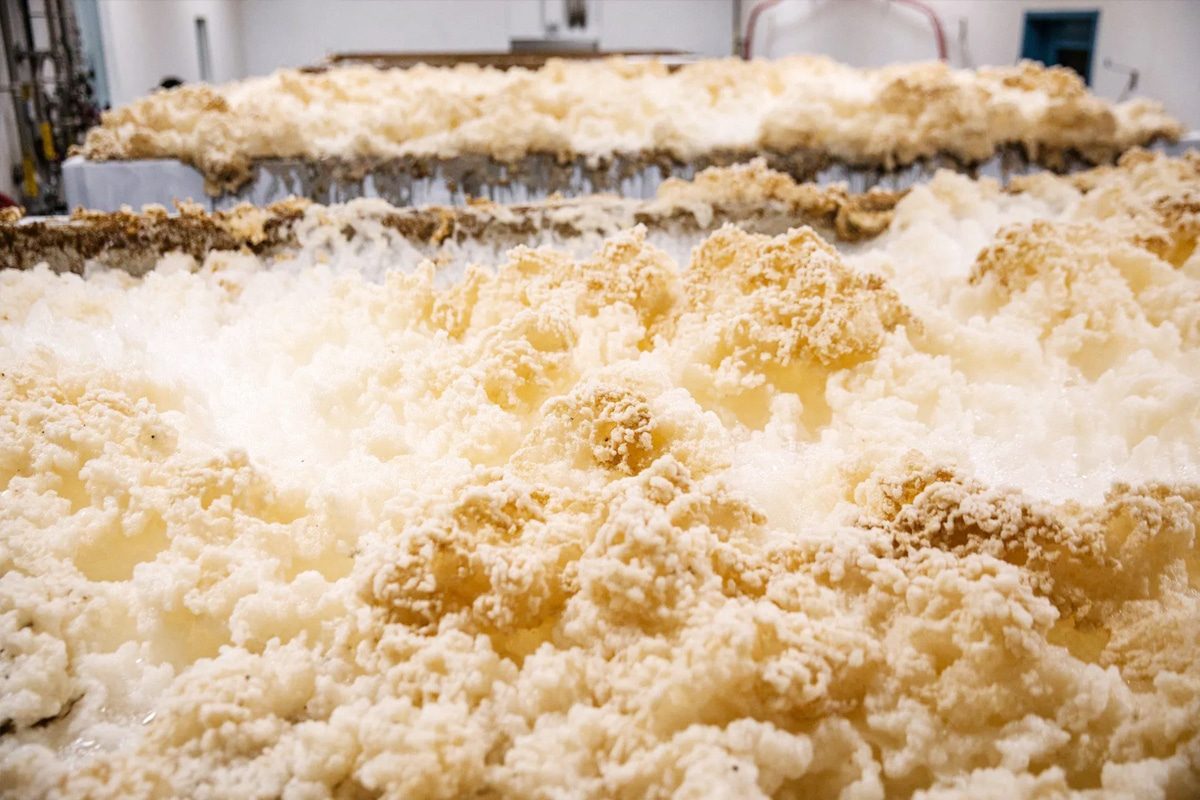
Open Fermentation Tanks
Design and Structure
Open fermentation tanks are characterized by their wide, shallow design, which allows the wort to have maximum surface contact with the surrounding environment. These tanks are often constructed from materials like stainless steel, wood, or stone, depending on the brewery’s tradition and the type of beer being produced. The open nature of these tanks means that they are uncovered or only partially covered during fermentation, allowing the wort to be directly exposed to the air. The design typically includes sloped or flat bottoms to facilitate easy removal of yeast and other sediment, which accumulates during fermentation. The structure is optimized for accessibility, enabling brewers to easily monitor the fermentation process and make adjustments as needed.
The Fermentation Process in Open Fermentation Tanks
The fermentation process in open tanks is notably different from that in closed systems due to the exposure of the wort to the environment. In these tanks, yeast ferments the sugars in the wort, producing alcohol, carbon dioxide, and a variety of flavor compounds. The open design allows for the possibility of spontaneous fermentation, where wild yeasts and bacteria present in the air can contribute to the fermentation process. This can lead to the development of complex and unique flavor profiles that are difficult to achieve in closed systems. The open environment also allows for better oxygenation of the yeast during the early stages of fermentation, which can enhance yeast health and activity. Throughout the process, brewers can easily skim off the krausen, the foamy layer that forms on top of the fermenting beer, and make real-time adjustments based on visual cues.
Advantages of Open Fermentation
- Unique Flavor Profiles: Open fermentation allows for the introducing of wild yeasts and bacteria, which can create complex and distinctive flavors in the beer. This method is particularly valued in traditional brewing styles, such as certain Belgian ales and Bavarian wheat beers, where these unique characteristics are desired.
- Enhanced Yeast Activity: The exposure to oxygen during the initial stages of fermentation can promote healthier yeast activity, leading to a more vigorous fermentation and potentially higher alcohol yields.
- Tradition and Authenticity: Many traditional breweries use open fermentation tanks to maintain historical brewing practices. This method preserves the authenticity of certain beer styles that have been brewed in this manner for centuries.
- Visual and Manual Control: The open design of these tanks allows brewers to closely monitor the fermentation process and make adjustments on the fly. This hands-on approach can be beneficial for managing the krausen and ensuring that the fermentation is proceeding as desired.
Disadvantages of Open Fermentation
- Increased Risk of Contamination: Exposure to the environment significantly raises the risk of contamination from unwanted microorganisms. This can lead to inconsistent batches and potential spoilage, which is a major concern for breweries aiming for high-quality, consistent products.
- Environmental Sensitivity: Open fermentation tanks are more susceptible to environmental factors such as temperature, humidity, and air quality. These factors can vary greatly depending on the brewery’s location and can affect the consistency and quality of the beer.
- Labor-Intensive Process: Managing open fermentation requires more hands-on attention from the brewers, including regular skimming of the krausen and monitoring for signs of contamination. This can be labor-intensive and may not be feasible for large-scale production.
- Space Requirements: The wide, shallow design of open fermentation tanks typically requires more space than closed tanks. This can be a limitation for breweries with limited floor space or those looking to maximize production capacity.
Open fermentation tanks offer unique advantages, particularly for brewers aiming to create traditional, artisanal beer styles with complex flavors. However, they also come with significant challenges, including the risk of contamination and the need for more hands-on management. Understanding these factors can help breweries consider using open fermentation in their production process.
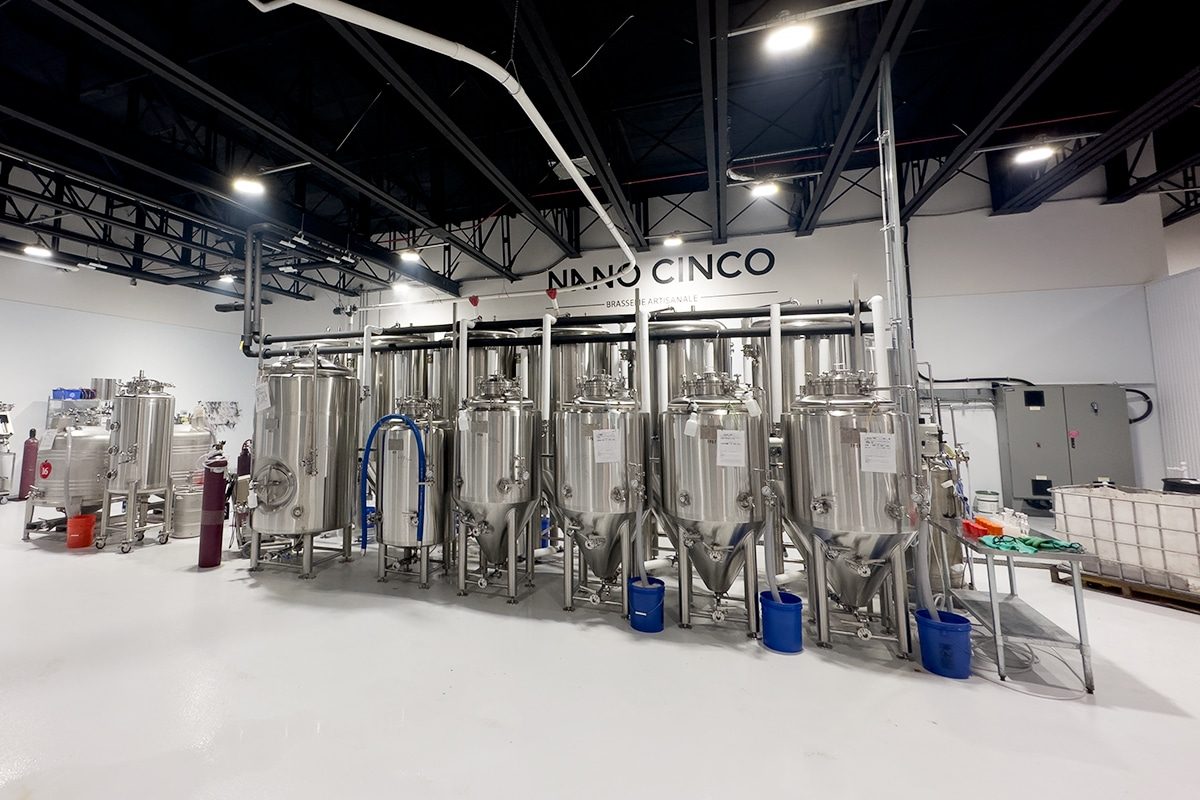
Closed Fermentation Tanks
Design and Structure
Closed fermentation tanks are typically cylindrical vessels, often made of stainless steel, designed to fully enclose the fermenting wort, protecting it from exposure to the external environment. These tanks usually have a conical bottom, which facilitates the collection and removal of yeast and other sediment that settles during fermentation. The top of the tank is sealed, with fittings for pressure control, gas release valves, and ports for adding ingredients or sampling the beer. The design also often includes built-in temperature control systems, such as glycol jackets, which help maintain the ideal fermentation temperature throughout the process. These features make closed fermentation tanks highly efficient and versatile for a wide range of brewing operations.
The Fermentation Process in Closed Fermentation Tanks
In closed fermentation tanks, the wort undergoes fermentation in a controlled environment, where the exposure to air and external contaminants is minimized. The yeast consumes the sugars in the wort, producing alcohol and carbon dioxide, just as in open fermentation. However, in a closed system, the carbon dioxide is often trapped within the tank, which can naturally carbonate the beer or be released through pressure control valves. This controlled environment allows brewers to precisely manage factors such as temperature and pressure, which can help achieve consistent results. Additionally, the sealed nature of the tank prevents unwanted microorganisms from entering, reducing the risk of contamination and spoilage. The entire process is typically automated, allowing for minimal manual intervention, which is particularly beneficial in large-scale brewing operations.
Advantages of Closed Fermentation
- Contamination Control: One of the most significant advantages of closed fermentation tanks is the reduced risk of contamination. The sealed environment protects the wort from exposure to wild yeasts, bacteria, and other contaminants, ensuring a more consistent and predictable fermentation process.
- Consistent Quality: The ability to tightly control the fermentation conditions, such as temperature and pressure, allows brewers to produce beer with consistent flavor, aroma, and carbonation levels. This consistency is especially important for commercial breweries that need to maintain the same quality across large batches.
- Space Efficiency: Closed fermentation tanks are typically more compact and vertically oriented, making them ideal for breweries with limited space. Their design allows for higher production volumes within a smaller footprint, maximizing the use of available space.
- Automation and Precision: Many closed fermentation systems come equipped with advanced monitoring and control features that enable brewers to automate the fermentation process. This reduces the need for manual intervention, allowing for greater precision and efficiency in production.
- Versatility: Closed fermentation tanks are suitable for a wide range of beer styles, from ales to lagers. The ability to control the fermentation environment makes these tanks versatile for different brewing techniques, including dry hopping, lagering, and more.
Disadvantages of Closed Fermentation
- Initial Investment Cost: Closed fermentation tanks, especially those made from high-quality stainless steel with advanced features, can be expensive to purchase and install. This higher upfront cost can be a barrier for smaller breweries or those just starting.
- Limited Flavor Complexity: The controlled environment of closed fermentation can sometimes result in less complex flavor profiles compared to open fermentation. The lack of exposure to wild yeasts and bacteria means that certain unique, spontaneous flavors are less likely to develop.
- Maintenance Requirements: While stainless steel fermentation tanks are durable and easy to clean, the complexity of closed fermentation systems—particularly those with multiple valves, sensors, and temperature controls—requires regular maintenance to ensure they function properly. This can increase the operational costs and require more specialized knowledge.
- Reduced Visual Monitoring: Unlike open fermentation tanks, where brewers can visually inspect the process, closed fermentation tanks require reliance on instrumentation and sensors to monitor fermentation. While this is often more accurate, it can reduce the brewer’s direct interaction with the beer during fermentation.
Closed fermentation tanks are a staple in modern brewing, offering significant advantages in terms of contamination control, consistency, and efficiency. However, they also require a higher initial investment and ongoing maintenance, and they may limit the development of certain complex flavors. For breweries focused on producing high-quality, consistent beers on a large scale, closed fermentation tanks are an excellent choice, offering the precision and reliability needed for successful brewing operations.
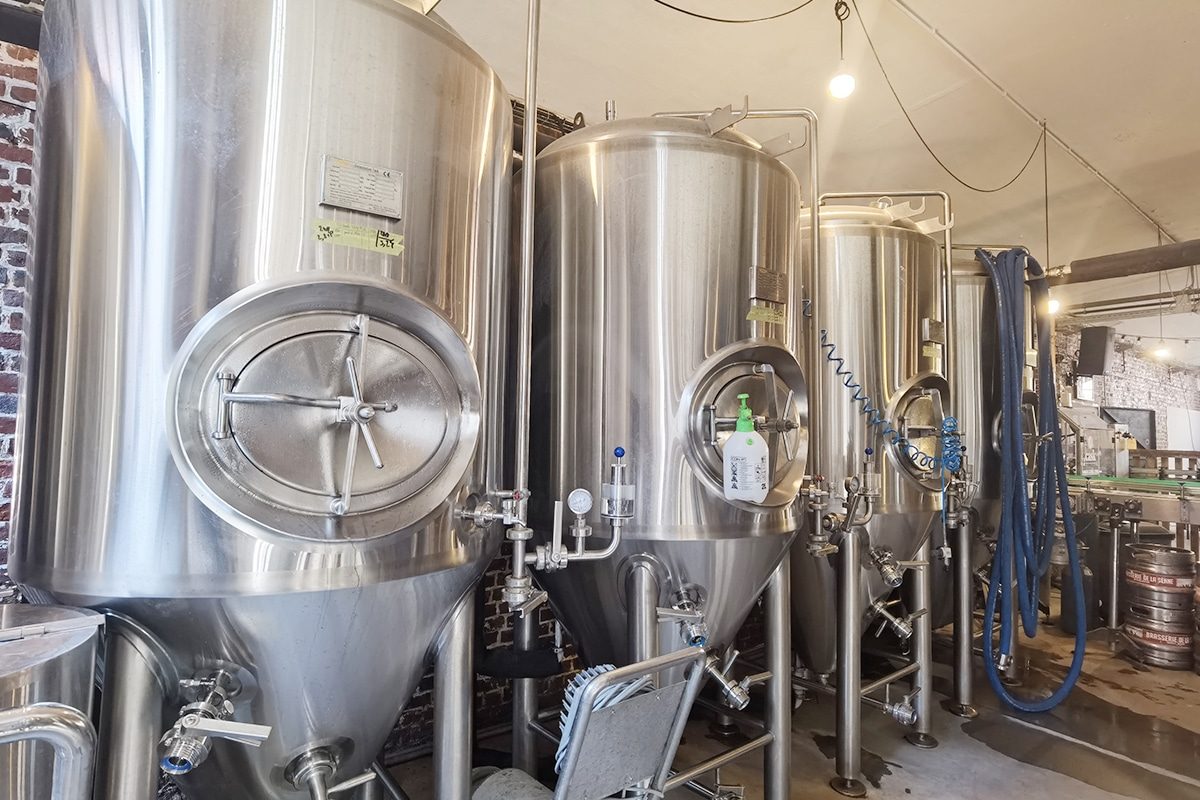
Key Differences Between Open and Closed Fermentation Tanks
Microbial Interaction
One of the most significant differences between open and closed fermentation tanks is the level of microbial interaction. In open fermentation tanks, the wort is exposed to the surrounding environment, allowing wild yeasts and bacteria to interact with the fermenting beer. This can lead to spontaneous fermentation, contributing to the development of unique and complex flavors. However, this openness also increases the risk of contamination by unwanted microorganisms, which can spoil the beer or introduce off-flavors. In contrast, closed fermentation tanks create a sealed environment that minimizes exposure to external microbes. The controlled conditions in closed fermentation tanks reduce the likelihood of contamination, ensuring a more consistent and predictable fermentation process, but at the cost of some of the complexity that wild yeasts can provide.
Flavor Development
The flavor development in beer is closely linked to the fermentation environment. Open fermentation tanks are known for producing beers with rich, layered flavors, often characterized by fruity esters and phenolic compounds, which result from the interaction of yeast with oxygen and wild microorganisms. This method is particularly valued in traditional and artisanal beer styles, such as certain Belgian ales, where the complexity of flavor is a key characteristic. On the other hand, closed fermentation tanks tend to produce cleaner and more controlled flavors. The sealed environment allows brewers to precisely manage the conditions under which yeast ferments, leading to a more uniform flavor profile that is especially important in commercial brewing, where consistency across batches is essential.
Oxygen Exposure
Oxygen exposure is another critical factor that differentiates open and closed fermentation tanks. In open fermentation, the beer is exposed to oxygen throughout the process, which can influence yeast activity and the development of certain flavor compounds. While limited oxygen exposure can be beneficial during the early stages of fermentation, prolonged exposure increases the risk of oxidation, which can negatively affect the beer’s taste and shelf life. In contrast, closed fermentation tanks are designed to minimize oxygen exposure, preserving the beer’s freshness and preventing oxidation. This is particularly important for beer styles that require a clean, crisp finish, such as lagers and pilsners, where any oxidative flavors would be undesirable.
Temperature Control
Temperature control is more challenging in open fermentation systems due to their exposure to the ambient environment. Open tanks are more susceptible to fluctuations in temperature, which can impact yeast activity and, consequently, the flavor and quality of the beer. Brewers using open fermentation must often rely on traditional methods, such as natural cooling or temperature regulation through the brewing space, to maintain the desired fermentation temperature. In contrast, closed fermentation tanks are typically equipped with advanced temperature control systems, such as glycol jackets or integrated cooling mechanisms. These systems allow brewers to precisely manage the temperature, ensuring optimal yeast performance and consistent results. This level of control is especially crucial for brewing lagers and other beer styles that require strict temperature management during fermentation.
Fermentation Pressure
Fermentation pressure is another area where open and closed tanks differ significantly. Open fermentation occurs at atmospheric pressure, which can influence the yeast’s metabolism and the production of esters and phenols, contributing to the beer’s flavor profile. The lack of pressure can also result in a softer carbonation, which is characteristic of many traditional ales. In closed fermentation tanks, brewers can control the pressure within the tank. This control over pressure not only affects the yeast’s activity but also allows for the natural carbonation of the beer during fermentation. Pressurized fermentation can lead to smoother, more refined beers with consistent carbonation levels, which is particularly important for commercial brewers aiming for a specific mouthfeel and carbonation profile in their products.
Understanding the key differences between open and closed fermentation tanks is essential for brewers looking to achieve specific characteristics in their beer. From microbial interaction and flavor development to oxygen exposure, temperature control, and fermentation pressure, each type of tank offers distinct advantages and challenges. Open fermentation is ideal for creating complex, traditional beer styles with unique flavors, while closed fermentation provides the consistency, control, and efficiency needed for large-scale commercial brewing. By carefully considering these factors, brewers can choose the fermentation method that best aligns with their production goals and the desired outcomes for their beer.
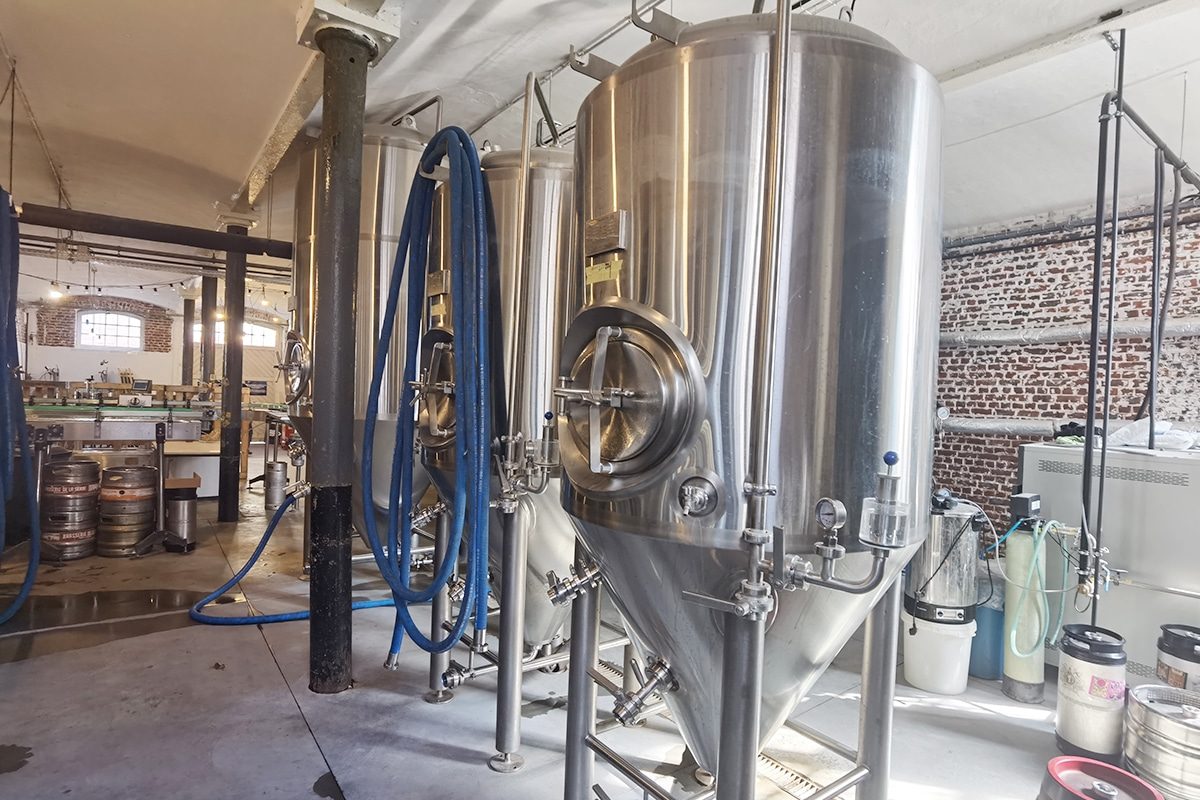
Choosing the Right Fermentation Tank
When deciding between open and closed fermentation tanks, several important factors must be considered to ensure that the chosen system aligns with the brewery’s production goals, available resources, and desired beer styles. Each type of fermentation tank offers distinct advantages and challenges, and the right choice depends on a thorough evaluation of these elements.
Factors to Consider
The primary factors to consider when choosing between open and closed fermentation tanks include the type of beer being produced, the brewery’s scale of operations, and the desired flavor profile. Open fermentation is often preferred for traditional or artisanal beers, where complexity and unique flavors are paramount. These tanks are particularly suitable for styles such as Belgian ales or Bavarian wheat beers, where interaction with wild yeasts and bacteria is beneficial. On the other hand, closed fermentation tanks are ideal for breweries that prioritize consistency, control, and scalability. These tanks are better suited for producing clean, well-balanced beers, such as lagers or pilsners, where precise control over fermentation conditions is crucial. Additionally, the level of automation desired and the brewery’s ability to manage potential risks, such as contamination in open systems, should also be factored into the decision-making process.
Cost Analysis
The cost of fermentation tanks varies significantly based on the type, size, material, and additional features of the tank. Open fermentation tanks are generally less expensive upfront due to their simpler design and materials, but they may require more space and labor, which can increase long-term operational costs. Closed fermentation tanks, especially those made from high-quality stainless steel with advanced features like integrated temperature control and pressure management systems, have a higher initial cost. However, these tanks often provide long-term savings through increased efficiency, reduced labor, and lower contamination risks. For breweries with limited budgets, the initial investment in closed tanks may seem daunting, but the potential for consistent quality and scalable production can justify the expense over time. In contrast, open fermentation tanks may be more accessible to smaller or traditional breweries, where the focus is on creating unique, small-batch beers.
Space and Infrastructure Requirements
Space and infrastructure are critical considerations when choosing a fermentation tank. Open fermentation tanks, due to their wide and shallow design, typically require more floor space. They also need a well-ventilated environment to manage the factors that affect fermentation, such as temperature and humidity. This can be a limiting factor for breweries with restricted space, as open tanks may not be the most efficient use of available square footage. Closed fermentation tanks, being more compact and vertically oriented, are generally more space-efficient and can fit into smaller or more densely packed brewing environments. These tanks often require additional infrastructure, such as glycol cooling systems and automated control units, which must be accounted for in the brewery’s layout and design. For breweries looking to maximize production in a limited space, closed fermentation tanks offer a more practical solution.
Flexibility in Beer Styles
The choice of fermentation tank also impacts the range of beer styles that a brewery can produce. Open fermentation tanks offer greater flexibility for creating beers with complex, multi-dimensional flavors, making them ideal for brewers who wish to experiment with traditional brewing methods and spontaneous fermentation. These tanks are particularly well-suited for producing specialty and seasonal beers that benefit from the unique conditions of open fermentation. Closed fermentation tanks, however, provide the versatility needed to produce a wide variety of beer styles consistently. The controlled environment of closed tanks makes it easier to replicate specific flavor profiles across different batches, which is essential for breweries aiming to produce a diverse portfolio of beers at scale. Additionally, closed tanks can accommodate various brewing techniques, such as dry hopping and lagering, making them a versatile option for breweries that produce a range of beer styles.
Choosing the right fermentation tank is a critical decision for any brewery, impacting everything from the flavor of the beer to the efficiency of production. By carefully considering factors such as the type of beer, cost implications, space and infrastructure requirements, and the desired flexibility in beer styles, brewers can make an informed decision that aligns with their business goals and brewing philosophy. Whether opting for the traditional appeal of open fermentation or the precision and consistency of closed fermentation, the right choice will help ensure the success and growth of the brewery.
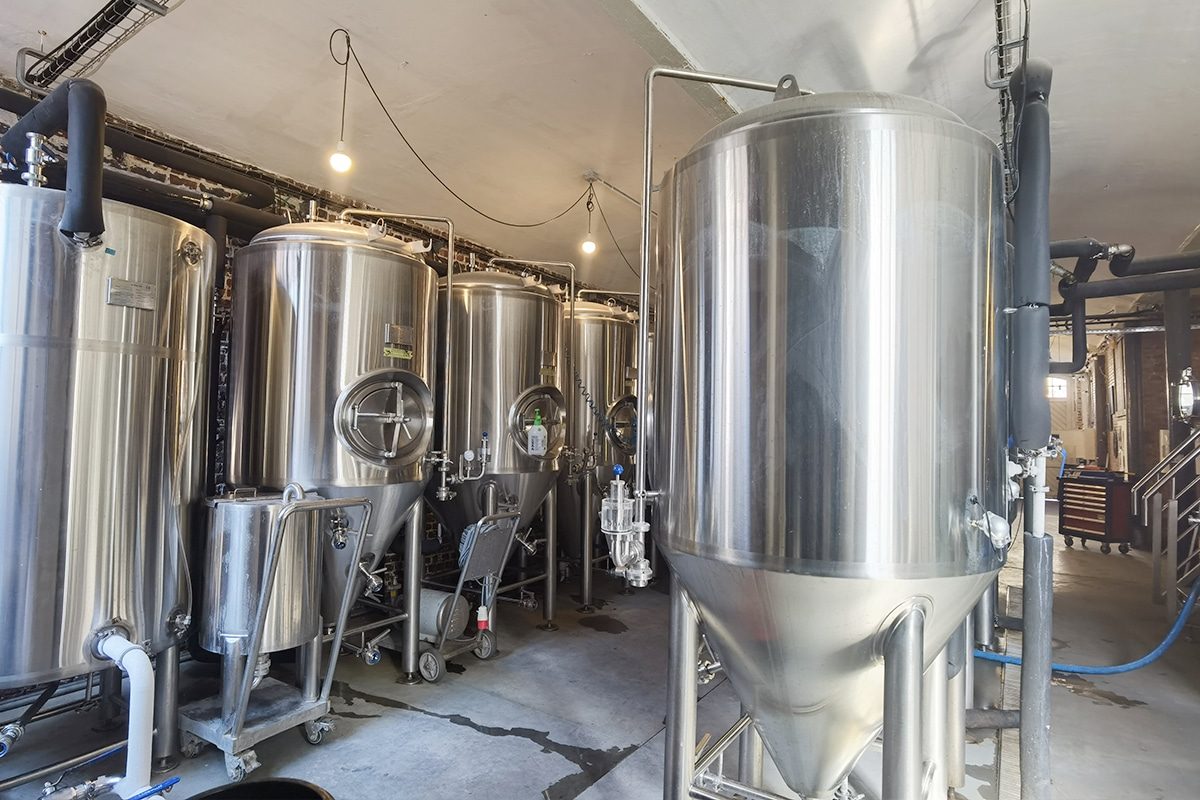
Impact on the Final Product
The choice between open and closed fermentation tanks significantly influences the characteristics of the final beer, affecting aspects such as flavor, aroma, clarity, appearance, and carbonation levels. Each type of fermentation tank imparts different qualities to the beer, shaping its overall profile and consumer appeal.
Flavor and Aroma
Flavor and aroma are among the most critical elements in defining the identity of a beer, and the type of fermentation tank used plays a pivotal role in its development. Open fermentation tanks are known for producing beers with complex and robust flavor profiles. The exposure to air and the potential for interaction with wild yeasts and bacteria can lead to the formation of unique esters, phenols, and other compounds that contribute to a beer’s distinctive taste and smell. This method is particularly valued in brewing traditional and artisanal beer styles, such as Belgian ales, where the rich, fruity, and spicy notes developed during open fermentation are highly sought after.
In contrast, closed fermentation tanks offer a more controlled environment, leading to cleaner, more consistent flavors. The absence of wild yeast and minimal oxygen exposure means that the flavor profile is primarily driven by the specific yeast strain used and the controlled fermentation conditions. This results in a more predictable and uniform taste, which is ideal for producing beers where consistency is key, such as lagers, pilsners, and many commercial ales. The controlled environment of closed tanks also allows for fine-tuning the fermentation process to highlight specific flavor attributes, ensuring that the desired taste and aroma are consistently achieved across batches.
Clarity and Appearance
The clarity and appearance of the beer are also influenced by the fermentation method. Open fermentation tanks, due to their exposure to the environment and the nature of the fermentation process, can sometimes result in beers with a more rustic appearance. These beers may exhibit a slight haze or contain some sediment, which is often considered desirable in certain traditional beer styles, where a more natural, unfiltered look is part of the beer’s character. The open design also allows brewers to visually monitor the fermentation process, making it easier to manage the krausen and other factors that can affect the final appearance of the beer.
On the other hand, closed fermentation tanks are designed to produce beers with a clearer, more polished appearance. The sealed environment helps to prevent the introduction of unwanted particles, and the conical bottom design of most closed tanks allows for efficient separation of yeast and trub (unwanted solids) from the beer. This results in a cleaner, brighter product, which is particularly important for styles that are expected to be visually appealing, such as pale lagers and pilsners. Additionally, the closed system supports the use of fining agents and filtration processes that further enhance the clarity of the beer.
Carbonation Levels
Carbonation is a crucial aspect of the beer’s mouthfeel and overall drinking experience, and the choice of fermentation tank directly affects the level and quality of carbonation. In open fermentation tanks, the beer is typically fermented at atmospheric pressure, leading to a naturally lower level of carbonation. While this softer carbonation is characteristic of many traditional ales, additional steps such as bottle conditioning or forced carbonation may be needed to achieve the desired level of fizziness, especially for beer styles that require higher carbonation.
Closed fermentation tanks, however, offer the ability to control the pressure during fermentation, which allows for natural carbonation within the tank. As the yeast ferments the sugars, carbon dioxide is produced and trapped in the tank, dissolving into the beer and creating carbonation. This method can produce a smoother, more consistent carbonation, which is ideal for beer styles where a specific level of carbonation is crucial, such as in sparkling ales or certain lagers. The ability to precisely control the carbonation levels in closed tanks also means that brewers can achieve the desired mouthfeel and carbonation profile without the need for additional processing steps.
The type of fermentation tank used—open or closed—has a profound impact on the final product, influencing its flavor, aroma, clarity, appearance, and carbonation levels. Open fermentation tanks are ideal for creating beers with complex flavors and a more rustic appearance, while closed fermentation tanks offer the consistency, clarity, and precise carbonation control needed for producing clean, well-balanced beers. Understanding these differences can help brewers brew a specific beer style and achieve the desired characteristics in the final product.
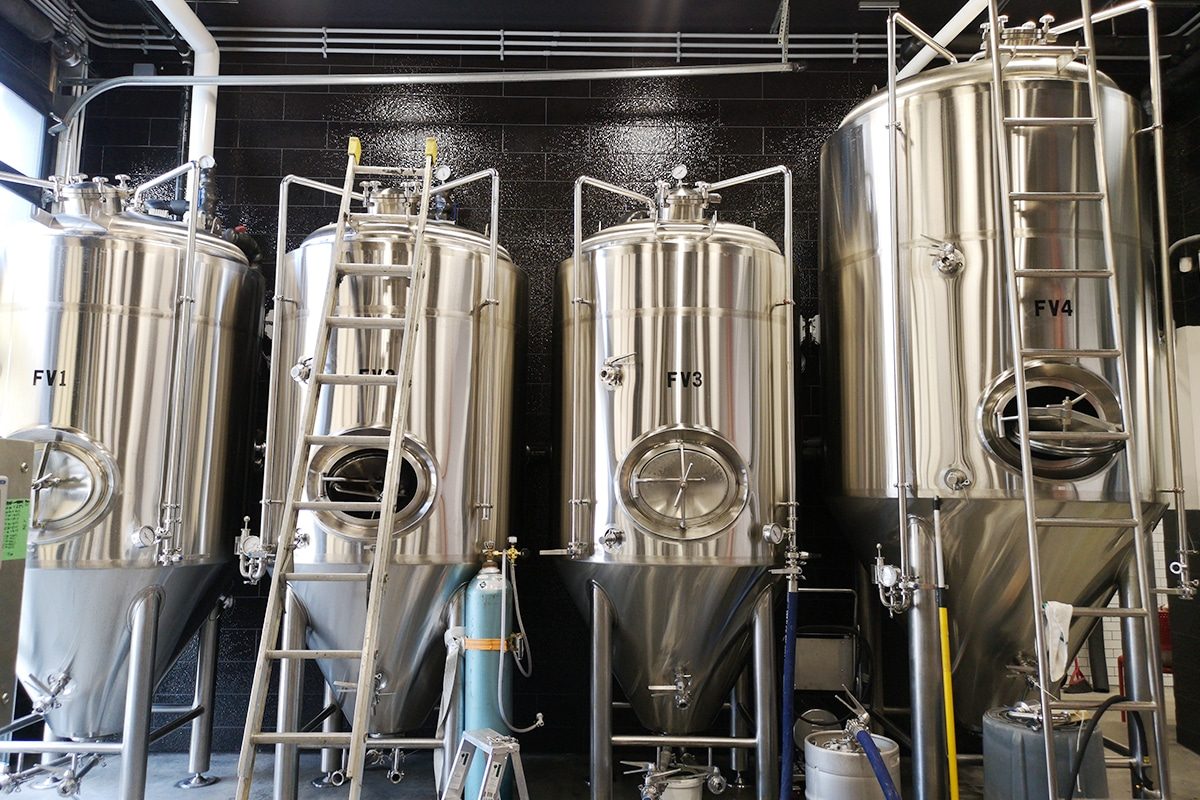
Challenges and Solutions
When choosing between open and closed fermentation tanks, brewers must navigate a range of challenges to ensure the quality and consistency of their beer. Two of the most significant challenges are managing contamination risks and balancing tradition with modern technology. Addressing these challenges effectively can lead to more successful brewing operations and better final products.
Managing Contamination Risks
- Challenge: One of the primary concerns with open fermentation tanks is the heightened risk of contamination. Because these tanks expose the wort to the surrounding environment, they are more susceptible to unwanted microorganisms, such as wild yeasts and bacteria. This exposure can introduce off-flavors, spoil batches, and lead to inconsistent results, making it a critical issue for brewers who rely on open fermentation. Even in closed fermentation tanks, where the risk of contamination is significantly lower, there is still a need for vigilance to prevent any breaches in the system that could introduce contaminants.
- Solution: For breweries utilizing open fermentation, strict hygiene practices are essential. This includes regularly cleaning and sanitizing all equipment, maintaining a clean brewing environment, and carefully monitoring the fermentation process to detect any signs of contamination early. Some brewers also use open fermentation only for specific beer styles that benefit from the interaction with wild yeasts, while reserving closed fermentation for other styles to minimize risks. In closed fermentation, the focus should be on maintaining the integrity of the system, including regular inspections and maintenance of seals, valves, and pressure controls. Additionally, implementing advanced monitoring systems can help detect potential issues before they affect the entire batch. These systems can track temperature, pressure, and other key parameters in real time, providing alerts if something goes awry.
Balancing Tradition with Modern Technology
- Challenge: Many brewers face the challenge of balancing the desire to maintain traditional brewing methods with the need to adopt modern technology. Open fermentation is often associated with traditional brewing practices, offering the potential for unique, complex flavors that are difficult to replicate in closed systems. However, these traditional methods can be labor-intensive, less efficient, and more prone to variability. On the other hand, closed fermentation tanks equipped with modern technology offer precision, control, and consistency but may lack the artisanal qualities that some brewers and consumers value.
- Solution: One approach to balancing tradition with modern technology is to selectively use open fermentation for specific beer styles that benefit from it while employing closed fermentation for others. This allows breweries to honor traditional methods while still taking advantage of the efficiencies and consistency offered by modern equipment. Additionally, brewers can integrate technology into traditional processes to enhance control and reduce risks without sacrificing the characteristics that make these beers unique. For example, temperature-controlled environments can be used even with open fermentation tanks to ensure more consistent results. Hybrid systems that combine elements of both open and closed fermentation are another solution, allowing brewers to enjoy the best of both worlds. These systems might involve starting fermentation in an open tank to develop certain flavors and then transferring the beer to a closed tank for the final stages of fermentation, where it can be protected from contamination and controlled more precisely.
Successfully managing the challenges associated with open and closed fermentation tanks requires a thoughtful approach that combines careful risk management with respect for tradition. By implementing rigorous hygiene practices, leveraging modern technology where appropriate, and considering hybrid approaches, breweries can navigate these challenges effectively. This allows them to produce high-quality beer that honors traditional methods while benefiting from the precision and consistency of modern brewing technology.
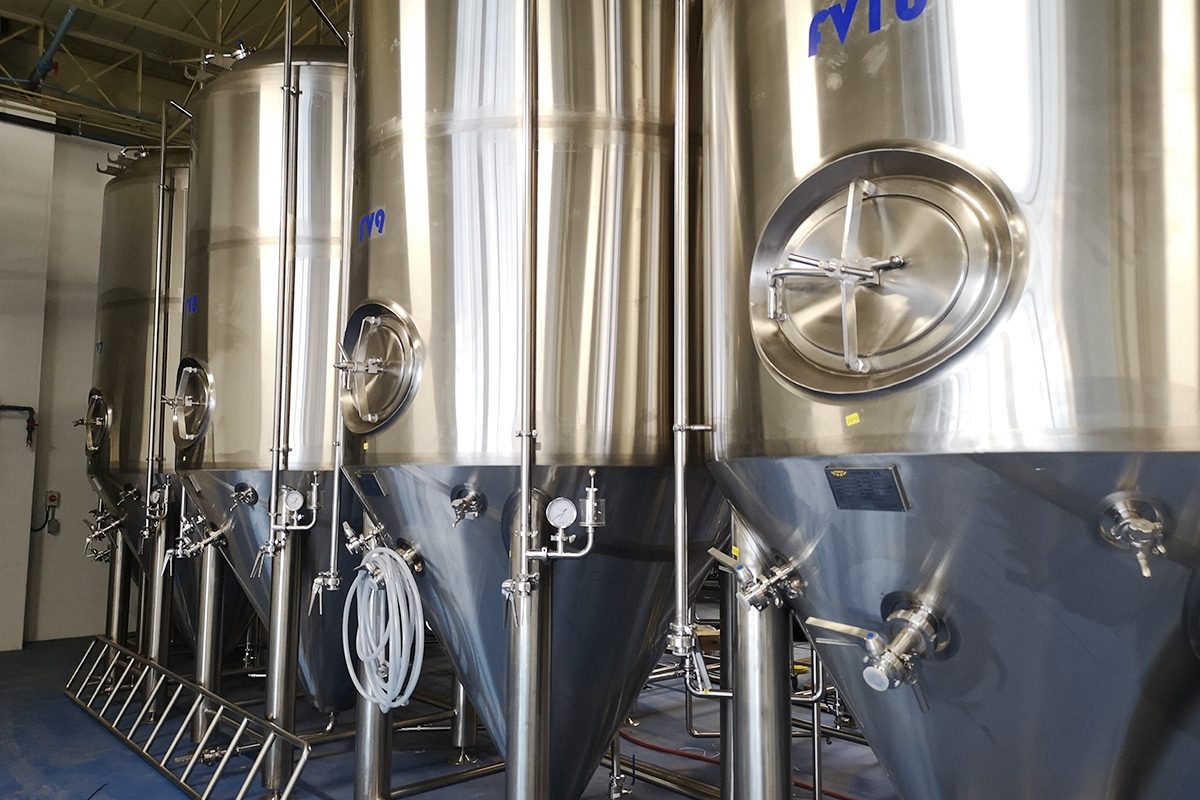
Summary
Understanding the differences between open and closed fermentation tanks is essential for brewers looking to craft specific beer styles and achieve desired production outcomes. Open fermentation tanks, with their exposure to the environment, are ideal for creating complex, traditional beers with unique flavor profiles, but they carry higher risks of contamination and require more hands-on management. In contrast, closed fermentation tanks offer a controlled environment that ensures consistency, cleanliness, and efficiency, making them well-suited for large-scale production and a wide range of beer styles. Each type of tank has its advantages and challenges, and the choice between them should be guided by the brewery’s goals, available resources, and the specific characteristics desired in the final product. By carefully considering these factors, brewers can select the fermentation method that best aligns with their brewing philosophy and operational needs, leading to successful and distinctive beers.
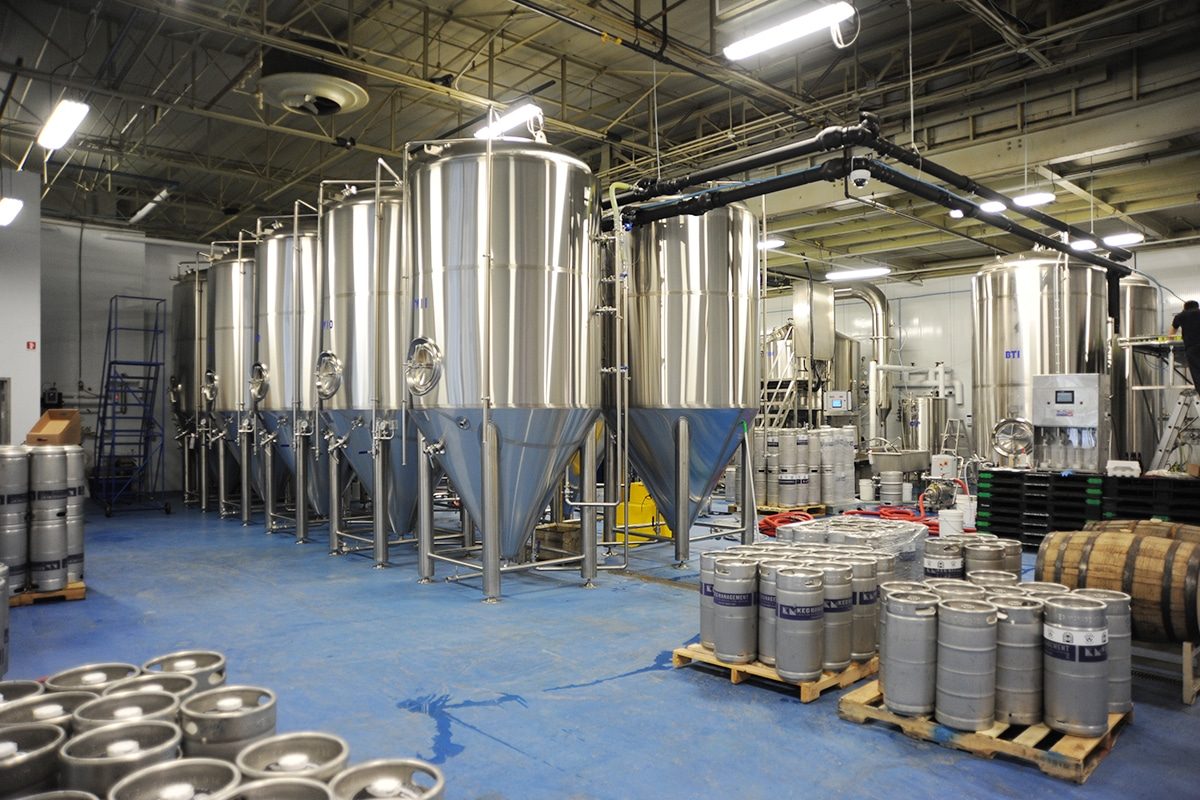
Get Turnkey Brewery Solutions
At ZYB Craft, we understand that choosing the right fermentation tank is a critical decision for any brewery, impacting the flavor, consistency, and overall quality of your beer. Whether you prefer the traditional complexity of open fermentation or the precision and control of closed fermentation, we offer comprehensive turnkey brewery solutions tailored to meet your unique needs. Our expert team will guide you through every step of the process, from selecting the ideal fermentation system to designing and installing the complete brewing setup. We provide custom solutions that include everything from fermentation tanks and brewing equipment to automation and control systems, ensuring seamless integration and optimal performance. With ZYB Craft, you can focus on what you do best—crafting exceptional beer—while we take care of the rest. Trust us to deliver the expertise, quality, and support needed to bring your brewing vision to life.



